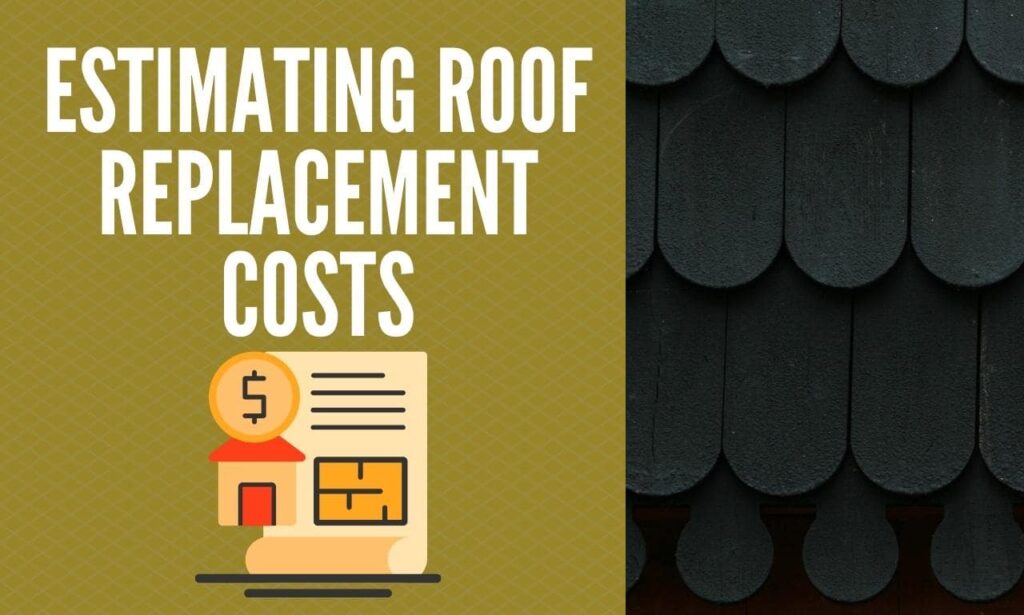Mastering the Art of Roof Replacement Negotiation with Your Insurance: A Homeowner Guide
Table of Contents
Introduction
Roof replacement is an important task for homeowners, and navigating the complicated insurance negotiations adds another level of challenge. The purpose of this guide is to provide homeowners with the knowledge and techniques they need to effectively communicate with their insurance provider about roof replacement.
Importance of Negotiating Roof Replacement with Insurance
Understanding the importance of communication is the foundation for successful results. Insurance policies come in a variety of forms, and recommending proactive and active behavior provides homeowners with the coverage they deserve.
Addressing Common Challenges in the Process
Homeowners often face hurdles in the roof replacement negotiation process. This section will examine these challenges and provide insights on how to address them.
Understanding Your Insurance Policy
Reviewing Your Coverage and Policy Details
| Coverage Type | What’s Covered | Limitations |
|---|---|---|
| Storm Damage | Wind, Hail, and Lightning Damage | Deductibles and Exclusions |
| Water Damage | Leaks and Water Infiltration | Gradual Damage Exclusions |
| Fire and Smoke Damage | Coverage for Fire and Smoke-Related Damage | Coverage Limitations |
Understanding the limits and exceptions within your system is important. For example, while storm damage can be covered, specific exclusions and deductibles can significantly affect the total amount paid.
Identifying Covered and Excluded Scenarios
This section examines situations that are generally covered or excluded by insurance policies, and clarifies what should be expected of homeowners
Key Considerations for Coverage
It is important to understand the parameters affecting coverage decisions. Factors such as the age of the roof, history of maintenance and cause of damage play a role in determining eligibility for coverage.
Assessing Roof Damage
Documenting the Extent of Damage
Proper documentation of roof damage is an important step in the negotiation process. This section provides an analysis and table detailing different types of roof damage.
Checklist for Assessing Roof Damage
- Inspect Shingles: Look for missing, cracked, or curled shingles.
- Check for Leaks: Identify areas with water stains or signs of leakage.
- Examine Gutters: Assess for granules from shingles, indicating wear.
- Inspect Flashing: Check for damage around chimneys, vents, and skylights.
| Type of Damage | Implications |
|---|---|
| Missing Shingles | Vulnerability to Water and UV Damage |
| Cracked Shingles | Reduced Protection Against Elements |
| Leaks | Interior Damage and Mold Growth |
| Granule Loss | Weakened Shingle Structure |
| Damaged Flashing | Increased Risk of Water Infiltration |
Gathering Evidence and Documentation
This section emphasizes the importance of proper documentation and provides facts about supporting documentation that strengthens your insurance policy.
Importance of Thorough Documentation
Clear and detailed communication documentation is tangible evidence. Photos, videos, and written reports for a compelling case for your case.
Facts: Supporting Documents for Insurance Claims
- Photographic Evidence: High-resolution images of damage.
- Contractor Quotes: Estimates from reputable roofing contractors.
- Weather Reports: Documentation of the weather conditions leading to damage.
- Maintenance Records: Proof of routine roof maintenance.
Engaging with Your Insurance Provider

Initiating the Claim Process
This section provides step-by-step guidance on the filing process, as well as information needed to successfully navigate the investment process.
Step-by-Step Guide to Filing a Claim
- Contact Your Insurance Provider Promptly: Report the damage as soon as it’s discovered.
- Provide Basic Information: Policy number, contact details, and incident details.
- Schedule an Inspection: Cooperate with the insurance adjuster for a thorough assessment.
| Information | Details |
|---|---|
| Policy Number | Located on your insurance documentation. |
| Incident Date and Time | Specify when the damage occurred. |
| Description of Damage | Provide a detailed account of the damage. |
| Contact Information | Current contact details for communication. |
Communicating Effectively with Adjusters
This section explores effective communication strategies, including a diagram of a sample communication timeline.
Tips for Effective Communication
- Be Clear and Concise: Articulate the details of the damage without unnecessary complexity.
- Document All Interactions: Keep records of conversations, emails, and any written communication.
- Follow Up Promptly: Respond promptly to any requests or inquiries from the adjuster.
Estimating Roof Replacement Costs

Obtaining Multiple Roofing Quotes
Getting plenty of quotes is essential to establishing a reasonable roof replacement cost. This section demonstrates the value of obtaining multiple quotes and provides information on the average cost of roof replacement.
Benefits of Multiple Quotes
- Cost Comparison: Evaluate different quotes to ensure competitive pricing.
- Diverse Perspectives: Different contractors may identify varying aspects of the damage.
Facts: Average Roof Replacement Costs by Material
- Asphalt Shingles: $3 – $5 per square foot
- Metal Roofing: $7 – $12 per square foot
- Slate Roofing: $10 – $20 per square foot
Understanding Insurance Adjuster Estimates
Comparing contractor’s and adjuster’s estimates is an important part of the negotiation process. This section includes a table highlighting factors affecting adjusting accounts.
Comparing Contractor and Adjuster Estimates
| Factor | Contractor Estimate | Adjuster Estimate |
|---|---|---|
| Materials and Labor Costs | May Vary Among Contractors | Aligned with Insurance Standards |
| Scope of Work | May Include Additional Repairs | Focused on Essential Repairs |
| Overhead and Profit Margin | Set by Contractor’s Business Model | Adheres to Insurance Guidelines |
Understanding the factors considered by adjusters helps homeowners interpret and negotiate their estimates effectively.
Advocating for Fair Settlement
Presenting Evidence of Damage
Building a compelling case is critical for a a hit negotiation. This section gives insights into growing a persuasive argument and includes a determine for visible presentation.
Building a Compelling Case
- Organize Documentation: Present evidence in a clear and structured manner.
- Highlight Key Points: Emphasize the severity and urgency of the roof damage.
Handling Negotiations and Revisions
Negotiating with insurance adjusters requires a strategic method. This phase offers practical strategies and data on common negotiation pitfalls to keep away from.
Strategies for Successful Negotiations
- Be Informed: Understand your policy, coverage, and the extent of damage.
- Remain Firm but Polite: Advocate for fair treatment without confrontation.
Facts: Common Negotiation Pitfalls to Avoid
- Accepting the Initial Offer Too Quickly: Take the time to thoroughly review and negotiate.
- Not Seeking Clarification: Ask questions if any terms or details are unclear.
Navigating the Claims Process
Understanding Dispute Resolution Options
Developing dispute resolution strategies for understanding disagreements is essential. This section provides an overview of intermediaries and intermediaries, and includes a table showing their advantages and disadvantages.
Overview of Mediation and Arbitration
- Mediation: Involves a neutral third party facilitating a resolution.
- Arbitration: A more formal process where a third party makes a binding decision.
| Resolution Method | Pros | Cons |
|---|---|---|
| Mediation | Informal, Potential for Compromise | Non-Binding Resolution |
| Arbitration | Formal Decision, Binding Outcome | Limited Opportunities for Appeal |
Seeking Legal Assistance if Necessary
This section includes comparative statistics when landlords consider legal advice and legal costs and potential benefits.
When to Consider Legal Counsel
- Denied Claims: If your claim is unjustifiably denied.
- Complex Cases: Involving multiple parties or intricate legal issues.
Finalizing the Agreement
Reviewing Settlement Offers
It is important to thoroughly investigate settlement options before finalizing a contract. This section provides advice for landlords to consider at this stage and includes a table outlining the elements of a comprehensive settlement.
Tips for Evaluating Offers
- Compare with Estimates: Ensure the offer aligns with contractor estimates.
- Consider Future Risks: Anticipate potential future issues and address them in the settlement.
| Element | Details |
|---|---|
| Financial Compensation | Detailed breakdown of approved costs |
| Scope of Repairs | Comprehensive plan for repairs |
| Future Damage Considerations | Provisions for potential future issues |
Securing Approval and Completing Repairs
This section guides homeowners through the final steps, ensuring a smooth process from agreement to repair completion.
Closing the Loop: Final Steps
- Obtain Written Approval: Formalize the agreement in writing.
- Monitor Repairs: Stay engaged throughout the repair process.
Facts: Common Post-Settlement Considerations
- Insurance Premium Impact: Understand potential premium changes post-settlement.
- Documentation for Future Claims: Keep records for potential future claims.






